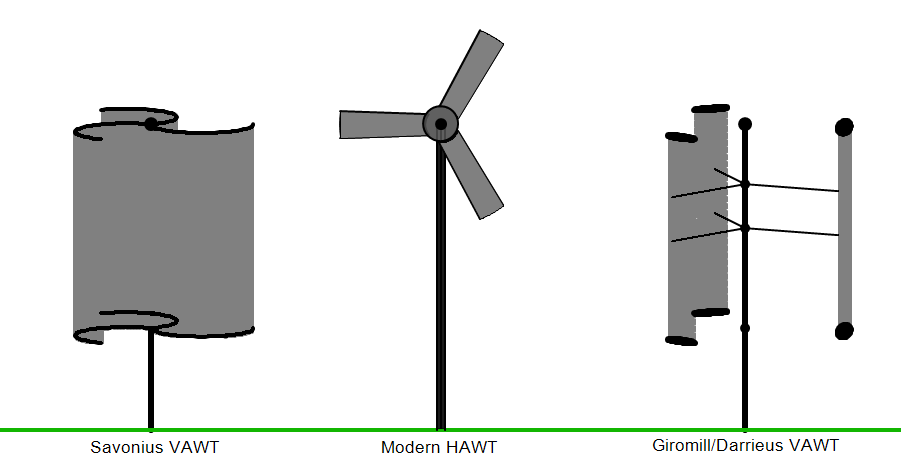|
We have researched various turbine types with a special focus on the vertical-axis wind turbine (VAWT). Its orientation is transverse to the wind, meaning that it can spin regardless of wind direction. This is especially useful in areas below the treeline where wind speeds constantly fluctuate and change direction. The mechanics of a VAWT are simpler than a traditional horizontal-axis wind turbine (HAWT), as every component can be mounted on a single vertical rod or pole without the need for a nacelle (the electrical box at the top of a standard HAWT). With the advent of the power conversion components at the base of the turbine, maintenance of the energy source is both cheaper and less physically demanding. The GIF below does a nice job of illustrating HAWTs and VAWTs. With one of our main goals being to construct a low-cost turbine, we have sought out the simplest solutions for the turbine blades. In the image above, the turbine on the left is called a Savonius turbine. Our design is similar, but uses two blades instead of three, hence the name: a two-scoop savonius turbine. My name is Mattheus, and along with my team of fellow researchers, we are designing and building a low-cost, low-tech wind turbine to pump and store water to generate electricity. Inspired by an internship working with a research student at the UMass Amherst Wind Energy Center this past summer, I want to apply what I learned there to a new situation that can effectively generate on-demand electricity from a renewable energy source. Feel free to check out the project I helped with here.
We have already begun designing and planning a model of our own system that uses water (either from the ocean/lake/river or from an enclosed system) as a mechanical storage medium that can be released at will to generate on-demand electricity. In the coming weeks, I look forward to sharing more about our sketches, designing process, and overall progress with our research. |
Research TeamMattheus Carpenter Archives
April 2018
Categories |

 RSS Feed
RSS Feed